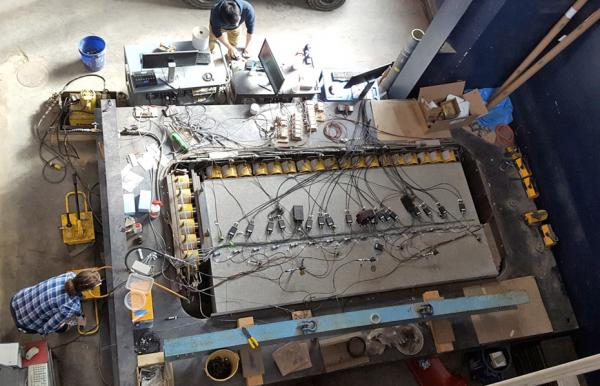Earthquake initiation, fluid injection, rupture arrest, and the scaling of fracture energy: Insights from 3-meter laboratory rock experiments and dynamic rupture simulations
Video not found
Please check back later. Videos are usually posted within 24 hours.
Greg McLaskey
Dept. of Civil and Environmental Eng., Cornell University

- Date & Time
- Location
- Online-only seminar via Microsoft Teams
- Host
- David Lockner
- Summary
I describe experiments on a 3‐m rock sample where the slip nucleation process is imaged in detail and compare earthquakes initiated from externally applied shear stress to those triggered by direct fluid injection. Initiation properties are strongly affected by fault healing/loading rate, and fault strength heterogeneity. I also discuss why earthquakes ruptures stop. In the 3-m rock experiments, dynamic ruptures stop not because they reach a barrier of high strength or fracture energy, but because they propagate into a section of the fault with low initial shear stress (i.e. they run out of gas). We extend our lab results using dynamic rupture simulations that show how seismically observable breakdown energy can exhibit scaling with earthquake size, despite constant fault fracture energy. This is due to a scale invariant stress overshoot, which has been overlooked in recent studies of earthquake fracture energy.
 Jump to Navigation
Jump to Navigation